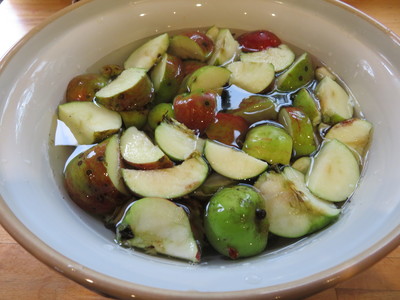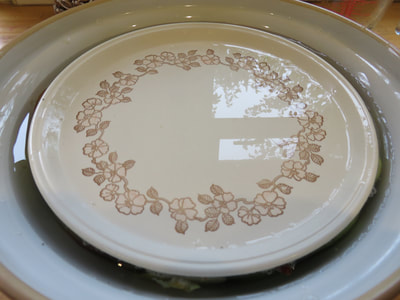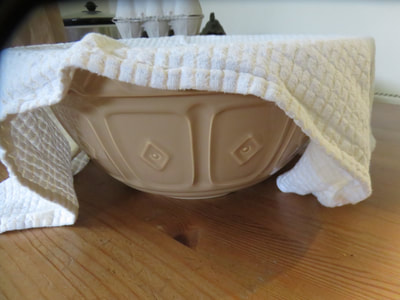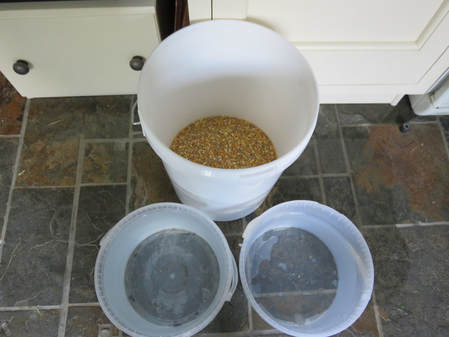Fermented feed, sprouting seeds and homemade apple cider vinegar (ACV) are not new or unfamiliar to poultry keepers across the world. However other than ACV which I buy from the equine section of the local feed store - the equine section, as it comes in larger quantities and is cheaper than in the poultry section. I've never made or fed the other two to my poultry.
I always thought the amount I would need for the number of hens I have, easily over 300 at the peak of the breeding season, would take up too much time and space.
I've now however decided to 'give it a go' If it works the feed will be a great additional, nutritional feed to give the hens over winter, especially if they are in lockdown again.
Firstly the apple cider vinegar - we have so many apples at the moment and with no pigs to eat the windfalls, skins and cores and as the hens can only eat so much I have a surplus.
There are many 'how to' videos online and it seems easy enough.So yesterday I added the apple peelings, cores etc to an earthenware bowl, covered with water, weighted down with a plate, covered with a cloth and left it to stand.
Stage 1 done !!!
I started with just a small amount to see if it really was that easy..I'll keep you updated.
I always thought the amount I would need for the number of hens I have, easily over 300 at the peak of the breeding season, would take up too much time and space.
I've now however decided to 'give it a go' If it works the feed will be a great additional, nutritional feed to give the hens over winter, especially if they are in lockdown again.
Firstly the apple cider vinegar - we have so many apples at the moment and with no pigs to eat the windfalls, skins and cores and as the hens can only eat so much I have a surplus.
There are many 'how to' videos online and it seems easy enough.So yesterday I added the apple peelings, cores etc to an earthenware bowl, covered with water, weighted down with a plate, covered with a cloth and left it to stand.
Stage 1 done !!!
I started with just a small amount to see if it really was that easy..I'll keep you updated.
Next the Fermented Feed - again plenty of online tutorials to watch. As far as I can understand you
1 Choose the feed you wish to ferment - I'm using the mixed corn I use as a scratch feed.
2.Cover the grain completely with non chlorinated water.
3.Stir, cover and leave to stand
4.Check water level and stir once a day for the next few days
5.If all's gone well drain and feed to the hens
The hardest part so far has been to find a bucket which doesn't leak to stand the tap water in over night to allow the chlorine to disperse.
1 Choose the feed you wish to ferment - I'm using the mixed corn I use as a scratch feed.
2.Cover the grain completely with non chlorinated water.
3.Stir, cover and leave to stand
4.Check water level and stir once a day for the next few days
5.If all's gone well drain and feed to the hens
The hardest part so far has been to find a bucket which doesn't leak to stand the tap water in over night to allow the chlorine to disperse.
Finally the sprouted/sprouting seeds - again it seems reasonably straightforward so I'm just off to do that now, using the mix seeds we have to feed the garden birds.
I'm sure I'm being very naive and it will all go horribly wrong, with each of them going sour or producing the dreaded mould. I'll let you know !
I'm sure I'm being very naive and it will all go horribly wrong, with each of them going sour or producing the dreaded mould. I'll let you know !




 RSS Feed
RSS Feed
